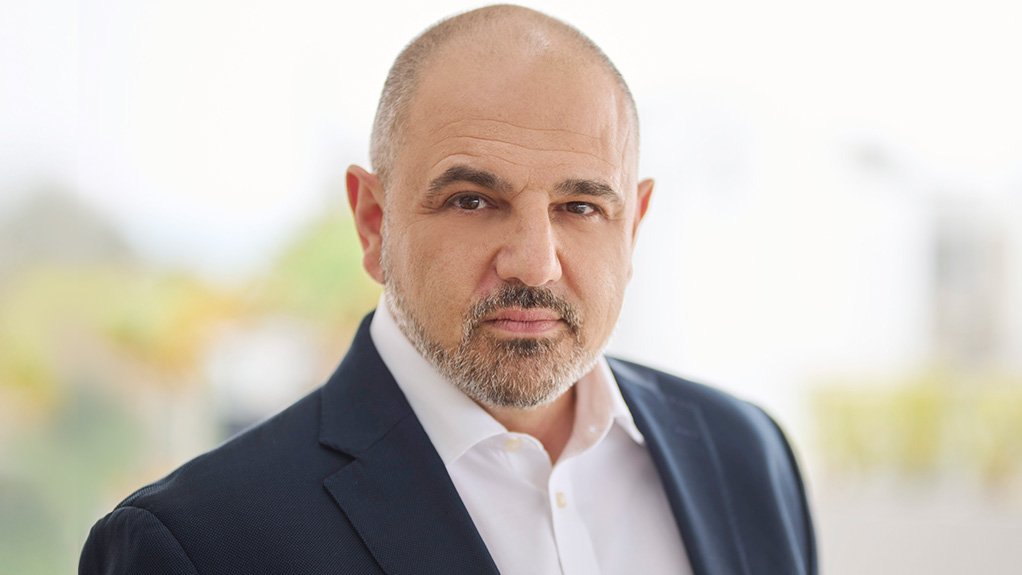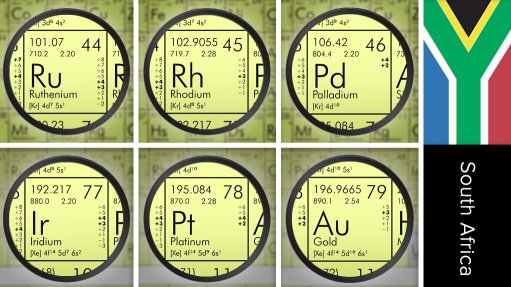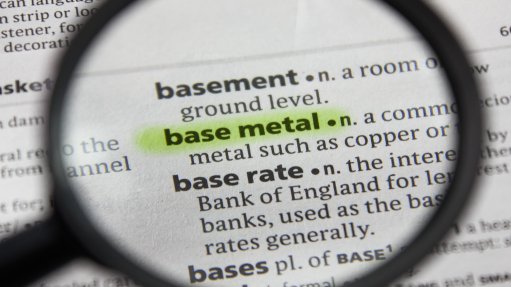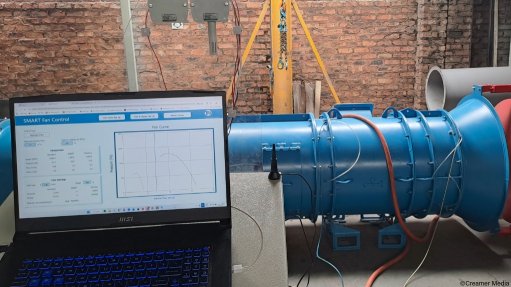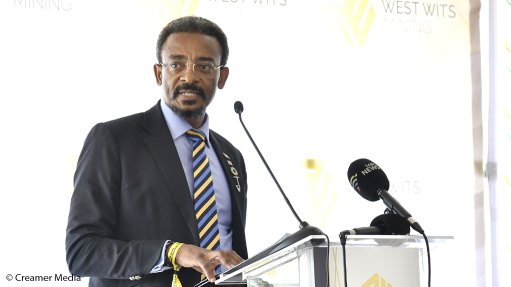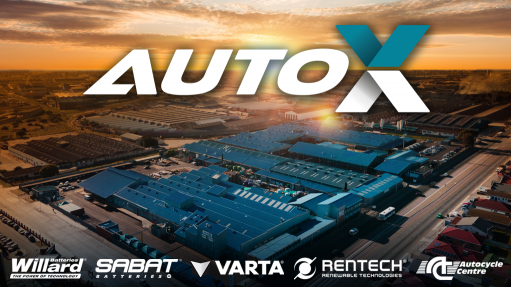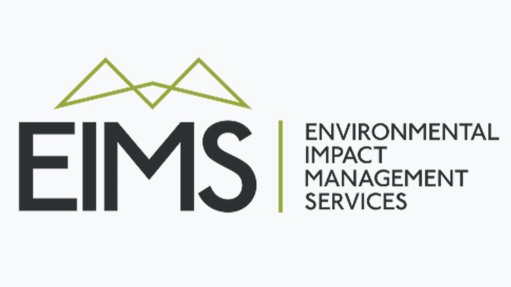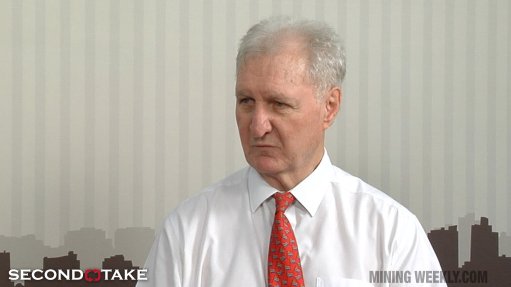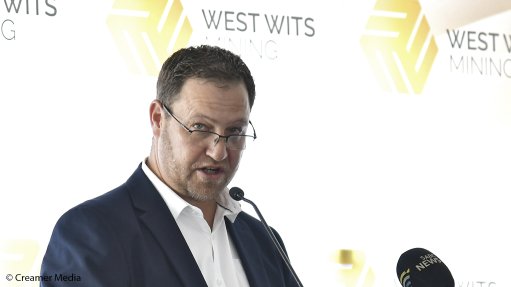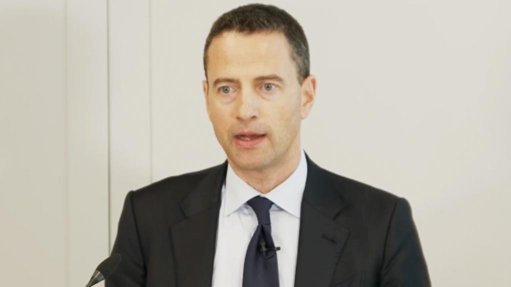Tharisa targets first underground ore by quarter two of 2026
JSE- and LSE-listed Tharisa has confirmed that its new underground operation is scheduled to deliver first ore by the second quarter of 2026, marking the start of a strategic shift that will secure the long-term future of its namesake platinum group metals (PGMs) mine on the western limb of the Bushveld Complex, in the North West province.
“We've been an opencast miner for the last 15 years of our existence, and as we deplete our openpit resources, we now transition from the openpit to start with underground mining. We've been studying and contemplating this for a number of years. We’ve always planned to go underground, but it gives us the opportunity to redefine our resources, to innovate again with purpose and to empower futures,” Tharisa CEO Phoevos Pouroulis said during a presentation of the company’s underground development roadmap on October 3.
During the presentation, it was emphasised that the move underground would sustain a yearly output of 5.6-million tonnes, extend the life-of-mine well beyond 2034, and lower costs while reducing environmental impact.
The transition came as openpit resources were expected to be depleted within the next decade. Pouroulis said the new underground model would unlock multi-generational value by taking advantage of a shallow orebody that allowed for mechanised on-reef development. This design minimised waste handling, lowered capital intensity, improved ore quality, and supported a cleaner, more efficient production cycle.
By reducing reliance on third-party ore and high-cost material, the company expected greater plant efficiency and higher recoveries of both PGMs and chrome concentrates.
The underground development, which would cost $547-million, would proceed in phases through two main complexes, Apollo and Orion. The Apollo shaft would be the first into production, with make-safe work scheduled for August 2025, followed by development initiation in the first quarter of 2026.
Apollo is expected to deliver first ore in the second quarter of 2026 and ramp up to steady-state output of 255 000 t/m by the third quarter of 2029. Orion will follow later, with portal development beginning in the first quarter of 2031, first ore targeted for the fourth quarter of that year, and steady-state production of 210 000 t a month by the third quarter of 2033, with potential to expand to 255 000 t a month. Together, Apollo and Orion will anchor Tharisa’s production base for decades.
A definitive feasibility study (DFS) has been completed, targeting an initial ten years of underground mining focused on the MG2 and MG4 chromitite layers at depths of around 450 m.
The DFS incorporated 639 diamond drillholes totalling 80.6 km, with 97 drillholes located within the underground footprint. The studies provided structural, geotechnical and hydrological modelling that refined understanding of orebody grade, thickness, and water behaviour, ensuring optimal design for long-term stability and efficiency.
Based on this work, Tharisa declared measured and indicated resources of 60.7-million tonnes at grades of 1.71 g/t platinum, palladium, rhodium, ruthenium, iridium and osmium (6E) PGMs and 19% chromium oxide (Cr2O3), and proved and probable reserves of 30.4-million tonnes grading 1.45 g/t 6E PGMs and 16.4% Cr2O3.
The orebody’s geometry supports a mechanised bord-and-pillar mining method designed to optimise recovery, improve safety, and provide operational consistency.
On-reef development ensures quick access to ore, while minimising lateral development and the handling of waste rock. Cleaner run-of-mine ore will improve plant performance, metal recoveries, and reduce inefficiencies tied to dilution.
Pouroulis noted that this approach would lower diesel consumption, require smaller fleets, and reduce surface disturbance, aligning with the company’s long-term environmental, social, and governance goals.
The phased portal strategy begins with Apollo, where three access points are sequenced to optimise entry into reef layers while minimising complexity and development risk. The Orion complex will later mirror Apollo’s design, providing operational consistency. The transition plan includes a partner-driven workforce strategy that phases in labour ramp-up while retraining and transitioning openpit employees into underground roles.
Supporting infrastructure was being engineered for safety, reliability, and scalability, Pouroulis said.
A fit-for-purpose trackless mobile machinery fleet, selected through motion studies and competitive tendering, will operate within a contractor mining model. The Apollo complex will host about 140 units, including load-haul-dump vehicles, trucks, drill rigs, bolters, scissor lifts, and graders.
Ventilation systems are designed to ensure optimal airflow and air quality, scalable for phased expansion.
Electrical infrastructure has been engineered for reliability, with redundant systems to support ventilation, dewatering, and equipment charging throughout the ramp-up phases.
Financially, the Apollo complex carries a capital cost of $363-million, while Orion requires $184-million, with peak funding of $173-million. The underground transition costs will be phased, with Apollo’s capital incurred until it reaches steady-state production in 2029, and Orion’s beginning in 2030 as it builds towards production in 2031.
Pouroulis reported that Tharisa had cash reserves of $165-million at the end of June, supported by an $80-million term loan, a $50-million revolving credit facility, and $45-million in asset-backed finance.
He said that Tharisa’s underground project was underpinned by a PGM basket price assumption of $1 633/oz, delivering an internal rate of return above 25%.
Pouroulis also noted that the co-production model would benefit from improved grade control and less dilution as underground mining focused on reef selection rather than blending. Chrome output was expected to increase, while prill split adjustments would enhance recovery of key PGM elements that were in structural supply deficit.
Early-stage site activities have already begun, including the establishment of essential infrastructure services, erection of modular facilities, and securing of high-wall areas. The operational readiness study has been completed, and all required environmental and specialist studies are finalised, with final regulatory approvals pending.
Pouroulis said the underground transition would deliver a long-term, stable supply of PGMs and chrome concentrates to global markets, ensuring the mine’s contribution continued for multiple generations. With sustainability and efficiency at its core, the company believed its underground plan offered a lower-cost, lower-impact, and higher-value future for the Tharisa mine.
Article Enquiry
Email Article
Save Article
Feedback
To advertise email advertising@creamermedia.co.za or click here
Press Office
Announcements
What's On
Subscribe to improve your user experience...
Option 1 (equivalent of R125 a month):
Receive a weekly copy of Creamer Media's Engineering News & Mining Weekly magazine
(print copy for those in South Africa and e-magazine for those outside of South Africa)
Receive daily email newsletters
Access to full search results
Access archive of magazine back copies
Access to Projects in Progress
Access to ONE Research Report of your choice in PDF format
Option 2 (equivalent of R375 a month):
All benefits from Option 1
PLUS
Access to Creamer Media's Research Channel Africa for ALL Research Reports, in PDF format, on various industrial and mining sectors
including Electricity; Water; Energy Transition; Hydrogen; Roads, Rail and Ports; Coal; Gold; Platinum; Battery Metals; etc.
Already a subscriber?
Forgotten your password?
Receive weekly copy of Creamer Media's Engineering News & Mining Weekly magazine (print copy for those in South Africa and e-magazine for those outside of South Africa)
➕
Recieve daily email newsletters
➕
Access to full search results
➕
Access archive of magazine back copies
➕
Access to Projects in Progress
➕
Access to ONE Research Report of your choice in PDF format
RESEARCH CHANNEL AFRICA
R4500 (equivalent of R375 a month)
SUBSCRIBEAll benefits from Option 1
➕
Access to Creamer Media's Research Channel Africa for ALL Research Reports on various industrial and mining sectors, in PDF format, including on:
Electricity
➕
Water
➕
Energy Transition
➕
Hydrogen
➕
Roads, Rail and Ports
➕
Coal
➕
Gold
➕
Platinum
➕
Battery Metals
➕
etc.
Receive all benefits from Option 1 or Option 2 delivered to numerous people at your company
➕
Multiple User names and Passwords for simultaneous log-ins
➕
Intranet integration access to all in your organisation



